标签:csr let length lis 简单 views 模型 code short
拿一个简单的例子来学习一下Django中的ORM:让用户输入个人信息,点击提交后以列表形式显示到下方。
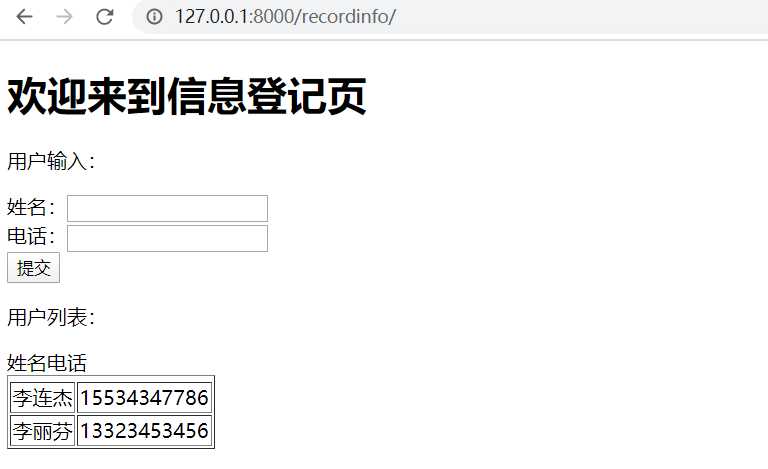
在视图处理函数中定义list对象,将从Request中接收到的信息,以字典形式添加到列表中,最后将list作为参数传递给render()函数。模板接收到数据后,遍历显示。
# recordinfo models.py from django.shortcuts import render, HttpResponse user_list = [] # Create your views here. def index(myrequest): # return HttpResponse(‘我是首页,欢迎你。‘) # pamdict={‘name‘:‘博哥‘} # return render(myrequest,‘recordinfo/myindex.html‘,pamdict) if myrequest.method == ‘POST‘: username = myrequest.POST.get(‘uname‘) userphone = myrequest.POST.get(‘uphone‘) print(username, userphone) temp = {‘username‘: username, ‘userphone‘: userphone} user_list.append(temp) return render(myrequest, ‘recordinfo/myindex.html‘, {‘datalist‘: user_list})
<!DOCTYPE html>
<html>
<head>
<title>首页</title>
</head>
<body>
<h1>欢迎来到信息登记页</h1>
<p>用户输入:</p>
<form action="{% url ‘recordinfo:index‘ %}" method="post">
{% csrf_token %}
姓名:<input type="text" name="uname"><br/>
电话:<input type="password" name="uphone"><br>
<input type="submit" value="提交">
</form>
<p>用户列表:</p>
<table border="1">
<thead>
<tr>姓名</tr>
<tr>电话</tr>
</thead>
<tbody>
{% for item in datalist %}
<tr>
<td>{{ item.username }}</td>
<td>{{ item.userphone }}</td>
</tr>
{% endfor %}
</tbody>
</table>
</body>
</html>
说明:{% csrf_token %} 是为了解决 Forbidden(403) CSRF verification failed.Request aborted。 这是一个因为跨域请求保护机制而报的错。只要我们在form标签中加上这行就行。
模板有了 但是我们要让模板变好看,有一些特效,得需要css、js这样的文件。
static文件夹建在app下面,再在static下面建一个与app同名的文件夹,在上一步建好的文件夹下创建css文件。
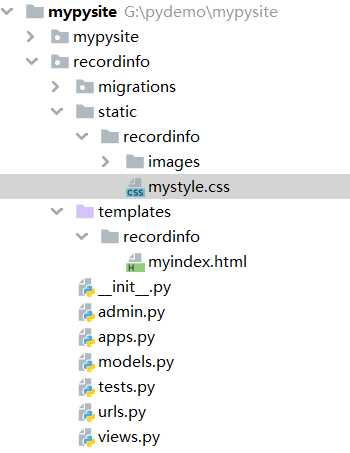
代码:
p { color: green; } body { background: blueviolet url("images/bg.png"); }
说明:为了让页面更好看一些,还加了一个背景图。
在myindex.html首部head标签内应用css文件。
<!DOCTYPE html> <html> <head> <title>首页</title> {% load static %} <link rel="stylesheet" href="{% static ‘recordinfo/mystyle.css‘ %}" type="text/css"> </head> <body> <h1>欢迎来到信息登记页</h1> <p>用户输入:</p> <form action="{% url ‘recordinfo:index‘ %}" method="post"> {% csrf_token %} 姓名:<input type="text" name="uname"><br/> 电话:<input type="password" name="uphone"><br> <input type="submit" value="提交"> </form> <p>用户列表:</p> <table border="1"> <thead> <tr>姓名</tr> <tr>电话</tr> </thead> <tbody> {% for item in datalist %} <tr> <td>{{ item.username }}</td> <td>{{ item.userphone }}</td> </tr> {% endfor %} </tbody> </table> </body> </html>

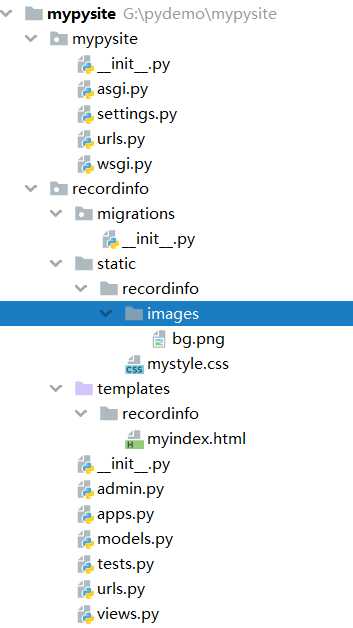
以上是没有使用数据库的情况,当我们服务器重启,这些输入数据就直接消失了,所以我们得想办法把这些数据保存到数据库中,专业名词叫:持久化。
在开始之前我们应该确认我们是否在settings.py注册了我们的app:告诉django,将来要给哪个app创建数据库表。
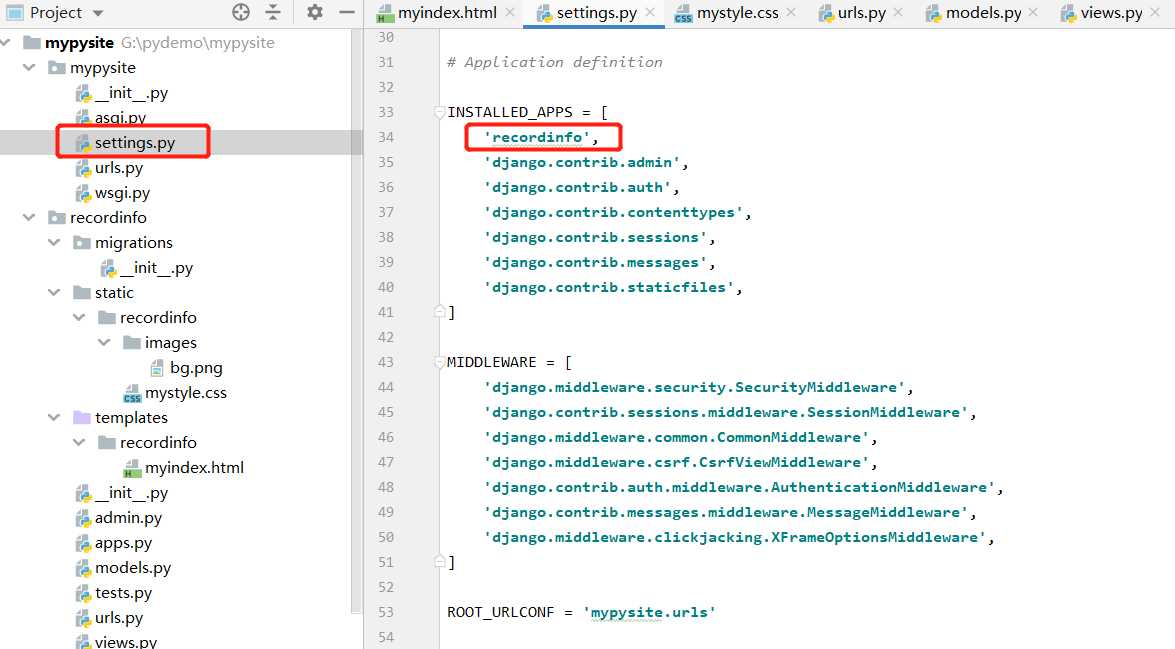
Django默认给我们设置的数据库类型是Sqlite:Sqlite数据库轻,免密码。减轻一下学习成本,暂且不去修改数据库配置项。
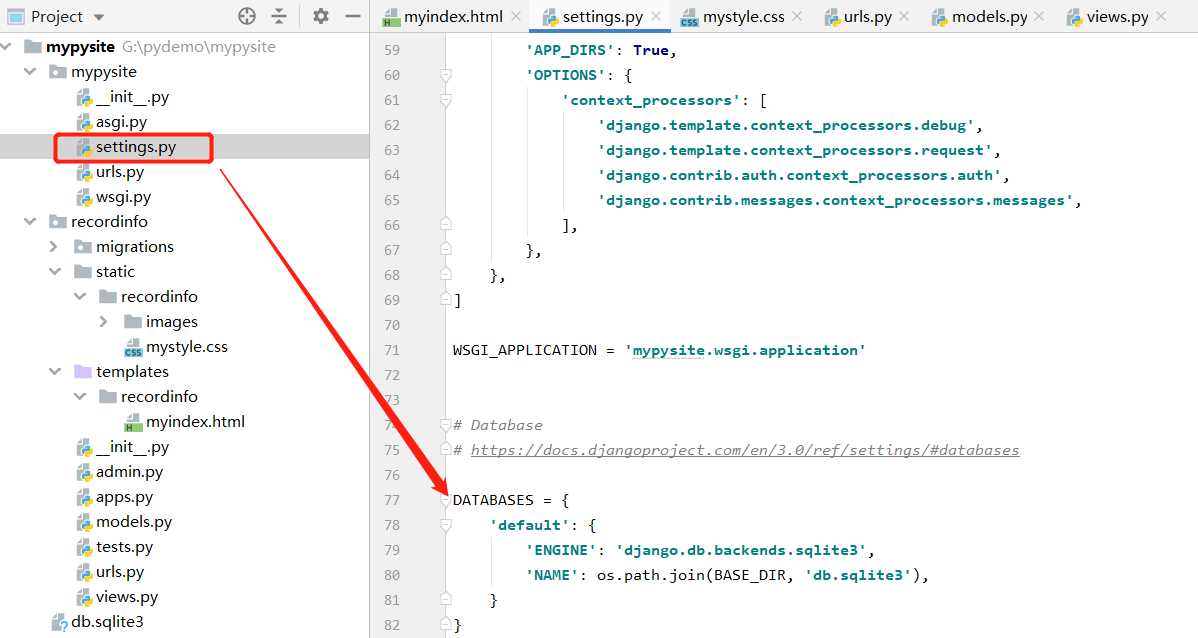
Django将继承自models的类,与数据库中的表进行映射。Django自动会为我们创建表和字段。我们在应用(recordeinfo)的models.py中写入模型类
from django.db import models # Create your models here. class User(models.Model): username = models.CharField(max_length=50) userphone = models.CharField(max_length=11)
使用 python manage.py makemigrations recordinfo 会在recordinfo应用的migrations目录中 生成一个0001_initial.py 迁移记录文件
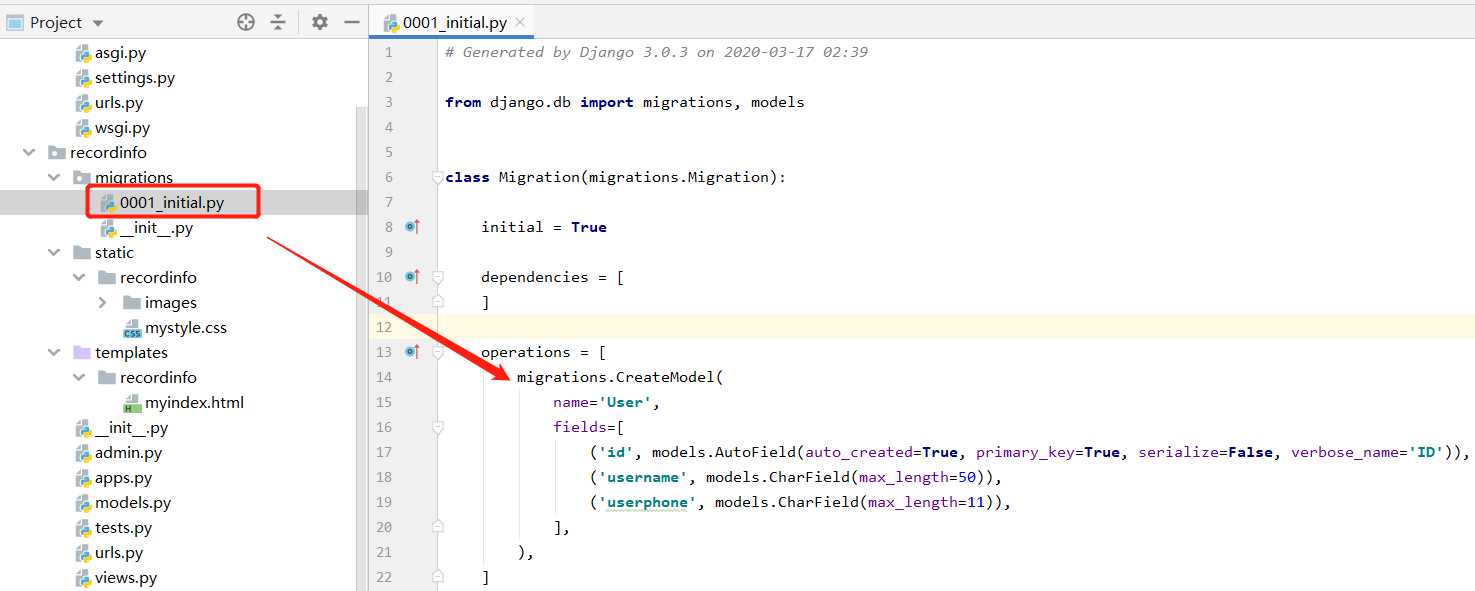
说明:打开迁移记录文件 可以看到 django为我们生成了一个建表操作。
执行真正的数据库表操作:python manage.py migrate
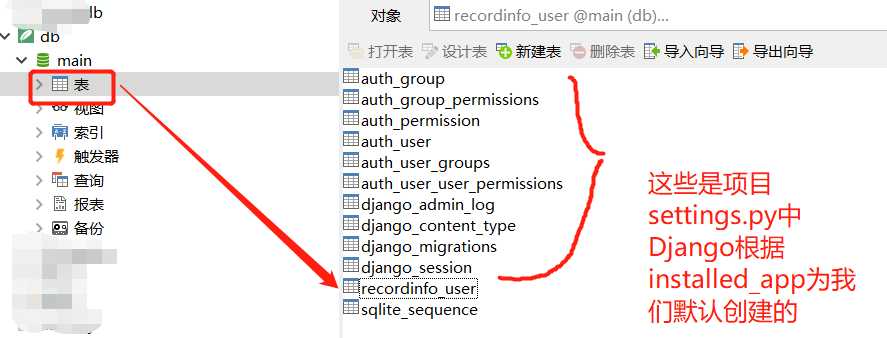
from django.shortcuts import render, HttpResponse from recordinfo.models import User user_list = [] def index(myrequest): if myrequest.method == ‘POST‘: user_name = myrequest.POST.get(‘uname‘) user_phone = myrequest.POST.get(‘uphone‘) print(user_name, user_phone) # 保存到数据库中 create相当于SQL里面的insert语句 User.objects.create(username=user_name, userphone=user_phone) user_list = User.objects.all() # 从数据库中查出所有数据 return render(myrequest, ‘recordinfo/myindex.html‘, {‘datalist‘: user_list})
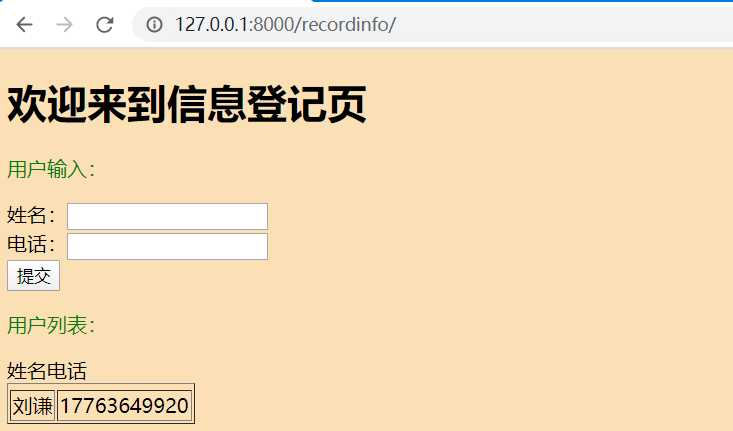
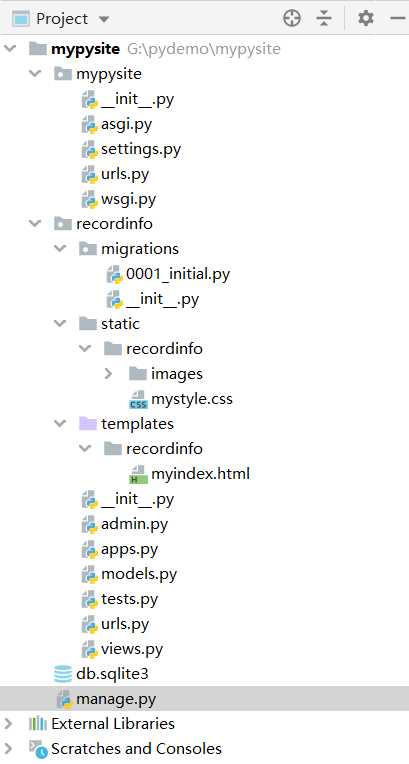
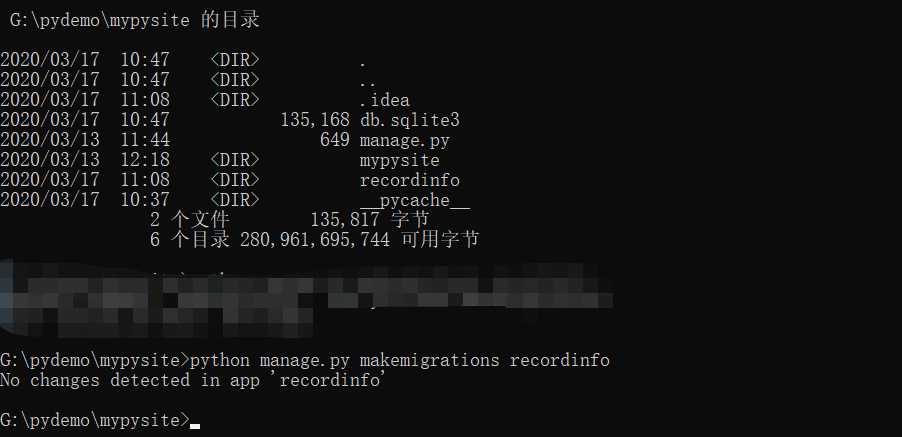
II:如果你像我一样使用的是pycharm 这款编辑器 那么选择下方的Terminal即可

PythonWeb-Django框架学习-Demo3-使用ORM
标签:csr let length lis 简单 views 模型 code short
原文地址:https://www.cnblogs.com/bigbosscyb/p/12491485.html